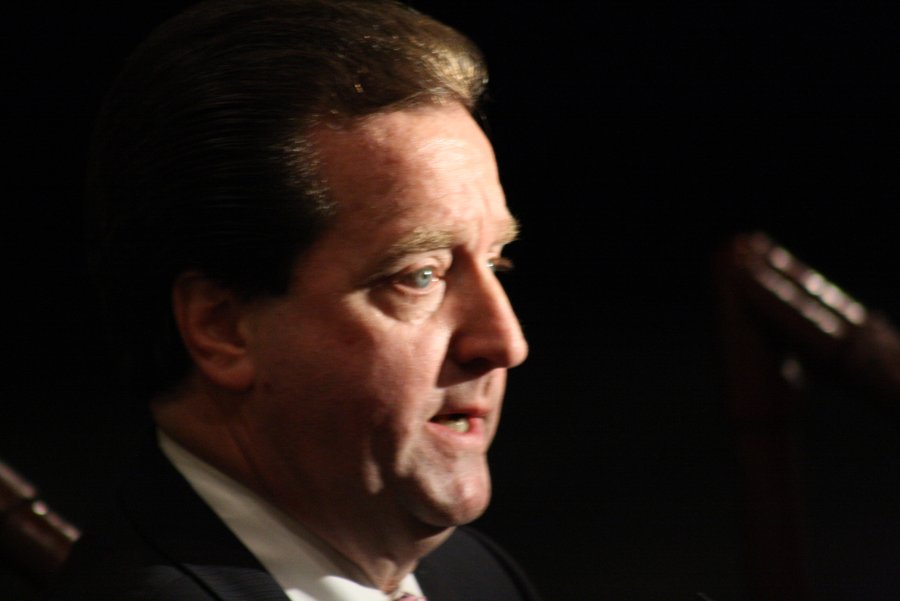Bayonne became something of an ideological battle ground over state aid to schools recently as the school district geared up for a campaign to pressure New Jersey to release as much as $50 million they say was promised but never delivered.
Meanwhile, former Bogota Mayor Steve Lonegan, the leader of a conservative group called “Americans for Property,” paid Bayonne a visit and argued against some of the court-mandated aid the state is giving to other urban districts, saying that property taxes are skyrocketing because of it.
Bayonne school officials have teamed up with certain local school districts – including North Bergen – to make its case that the state has shortchanged them by failing to live up to a bi-partisan funding formula developed under the state’s 2008 school funding law. The law has given money to other towns in the county due to factors including the socio-economic status of all of the town’s children. But Bayonne and North Bergen, which have some of the same urban issues, did not qualify the way neighboring towns did.
“Bayonne public schools depend upon the implementation of the full funding formula.” – Dr. Patricia McGeehan
____________
She said the Bayonne school district has lost tens of millions in state aide due to lack of full funding of the formula.
She said this money could have been used to increase classroom technology and to allow students to travel to education opportunities through field trips.
“Bayonne public schools depend upon the implementation of the full funding formula,” she said. “Now, more than ever, our children must continue to have the opportunity to be successful in a rapidly changing world.”
As many as 200 other school districts have been shortchanged, school officials said, and Bayonne has the biggest gap of any school district in the state. They said the district is owed just shy of $50 million, while North Bergen faced a shortfall in promised state aid of about $40 million according to state figures. Guttenberg has lost about $10 million and Weehawken, $1.5 million.
Rosalie Moran, director of Assessment for Title One programs in Bayonne – which deal with some of the neediest students in the district – said Bayonne school officials met in North Bergen with officials from the New Jersey Educational Law Center in November to map out a strategy for dealing with the shortfall, and that his campaign was one of the tools the district developed.
Political reasons?
Mayor Mark Smith, in a brief statement criticized the way state aid has been parceled out, suggesting that political reasons might be overriding the needs of students.
“There is no reason why a district like Union City should be getting full aid while Bayonne does not,” Smith said.
Union City’s mayor has been an ally of Gov. Christopher Christie.
School funding imposed by the state Supreme Sourt leads to rise in property taxes
In late November, Steve Lonegan, former mayor of Bogota and the leader of a conservative lobbying group, appeared at the Gary La Pelusa Civic Association in Bayonne, partly critical of the funding formula for state aid, which he said was unfair because it was mandated largely by the state Supreme Court, and is one of the key reasons why New Jersey has seen a spike in property taxes. He believes the decision-making about school aid funding has become so corrupted that his group would like to have school districts get aid amounts via the municipalities rather than from the state.
He said this rise in taxes and overspending by the state is not the responsibility of one party, but the fault of both Democrats and Republicans who refuse stop the escalation of spending that started in the mid-1960s.
Mike Proto, communications director for the group, showed how funding is based on a complex system with numerous costly overlaps. But the group was most critical of a system of spending that came about because the state largely took away local control over school funding. They are also complained that state Supreme Court rulings have taken the place of elected officials in determining what funding should be given to districts.
School officials, however, said that many of this group’s criticisms ignore sociological changes that occurred in the 1960s, such as the huge influx of poor minorities into the cities in the 1950s and 1960s, the collapse of industry and jobs in urban areas, and the flight of wealthy professionals to the suburbs, leaving city districts with crumbling schools and social problems the suburbs lacked. School officials said the courts intervened when it became clear that elected officials were unwilling to fund needy school districts in order to provide urban and suburban students with the same educational opportunities.
